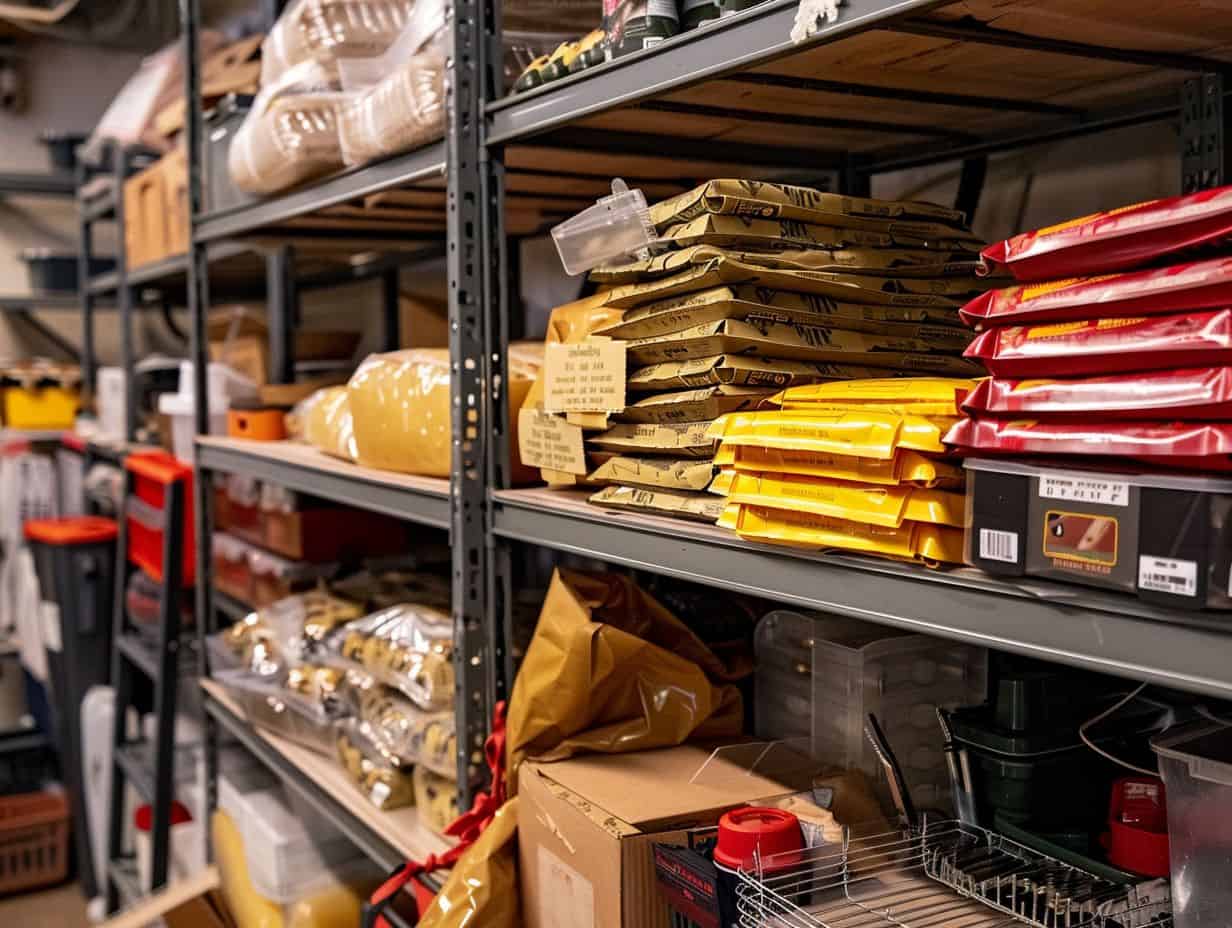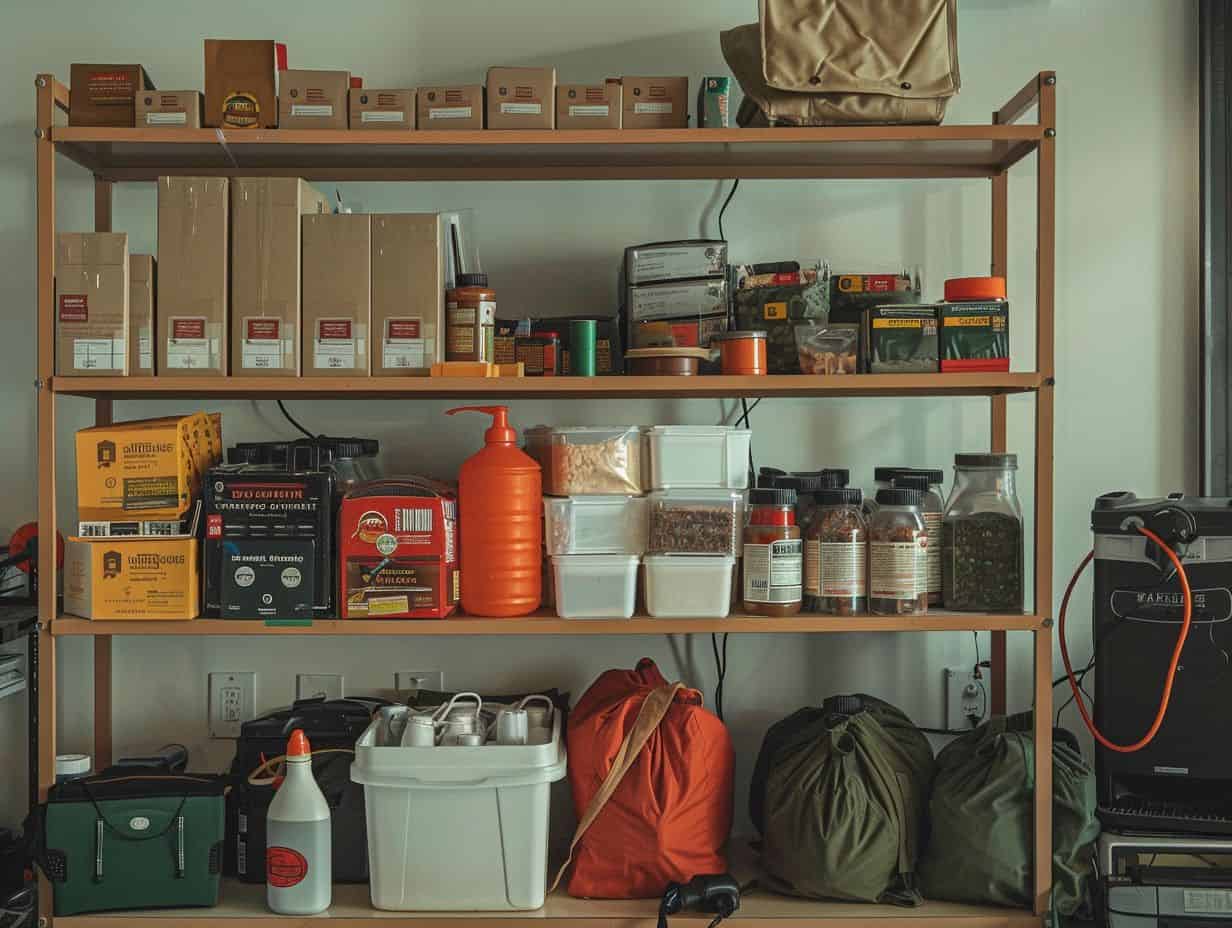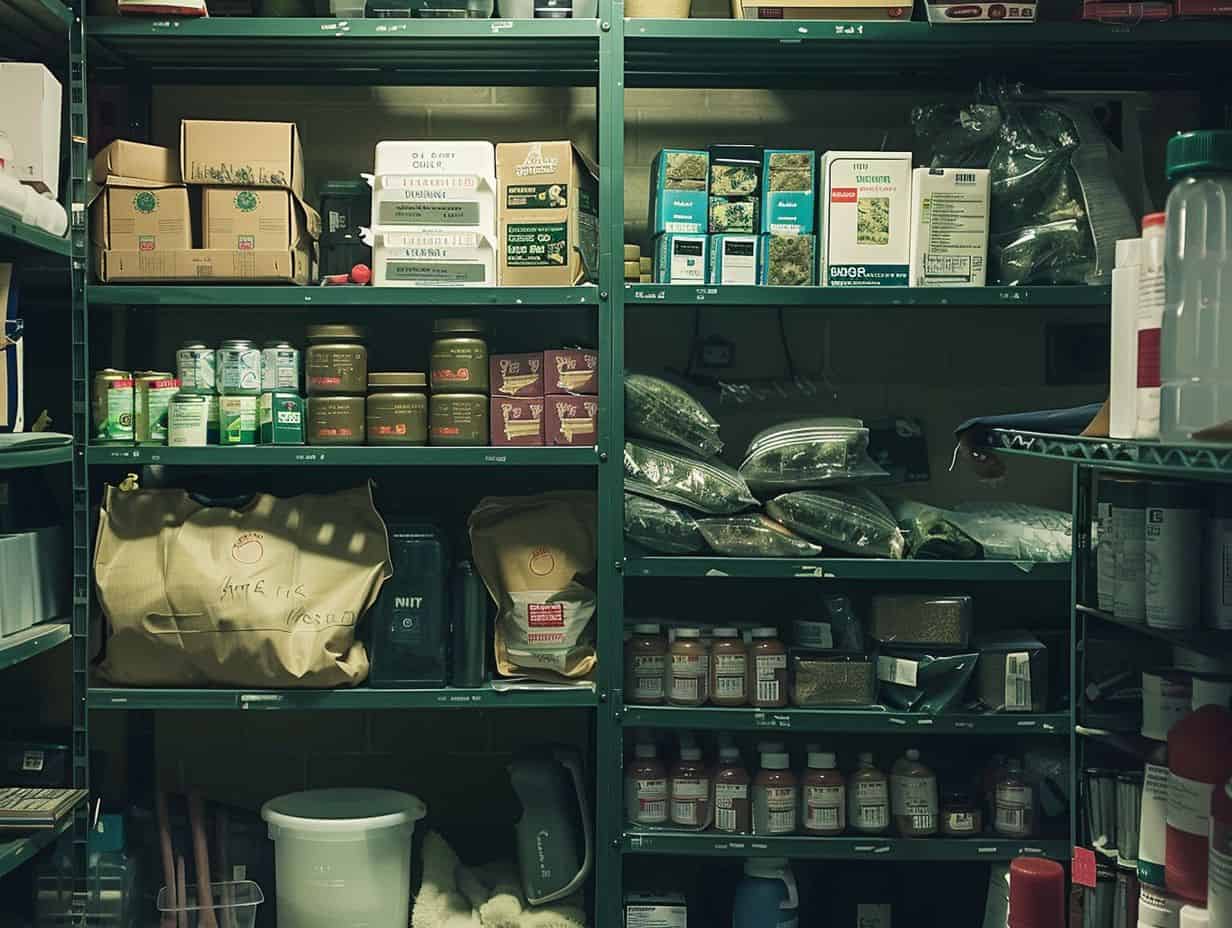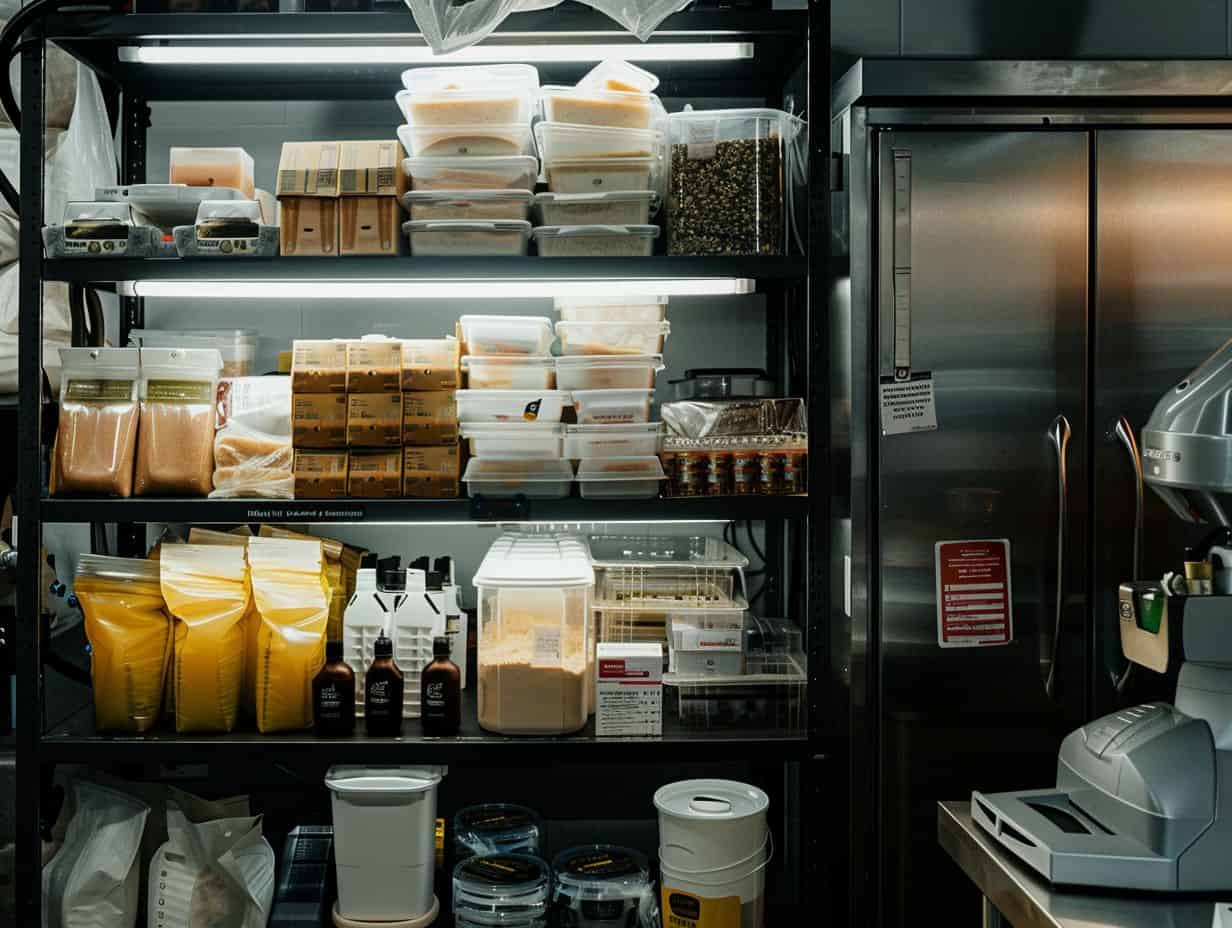Understanding the factors that affect the shelf-life of MREs and proper storage techniques is crucial.
This article delves into the importance of shelf-life assurance for MREs, including testing procedures such as accelerated and real-time shelf-life testing, as well as microbiological testing.
It also explores validation procedures for MRE shelf-life and provides tips for consumers on ensuring the longevity of their MREs through proper handling and storage practices.
Let’s explore further!
What Are MREs?
MREs, also known as Meals Ready-to-Eat, are self-contained, individual field rations commonly utilized by military personnel and emergency response teams. These convenient meals do not require refrigeration and can be consumed directly from the packaging.
They play a vital role as a source of sustenance in situations where regular food preparation is not viable, ensuring individuals have access to nutritious and easily transportable meals. The components of MREs typically consist of main entrees, side dishes, snacks, desserts, and beverages, all thoughtfully selected and packaged to offer a well-rounded meal.
The packaging of MREs is designed to endure harsh conditions and shield the contents from exposure to elements, maintaining product stability and prolonging shelf-life. This quality makes MREs well-suited for upholding food safety and providing sustenance during prolonged operations or emergencies.
How Long Do MREs Last?
The shelf-life of MREs varies depending on the storage conditions, production methods, and packaging materials used. Generally, MREs are designed to remain edible and safe for consumption for an extended period, often ranging from 3 to 5 years.
Factors such as temperature, humidity, and exposure to light play crucial roles in determining the longevity of MREs. For instance, storing MREs in cool, dry environments can help extend their shelf-life by reducing the rate of chemical reactions that lead to deterioration. The integrity of the packaging is essential in preventing external contaminants from compromising the contents. Temperature fluctuations and extreme heat can accelerate the breakdown of nutrients and compromise the safety of the MREs.
Predicting the shelf-life of MREs involves complex analyses of factors like oxygen permeability of packaging materials and the presence of moisture, which can lead to microbial growth and spoilage if not controlled effectively.
Factors That Affect MRE Shelf-Life
Numerous factors can influence the shelf-life of MREs, including product formulation, storage stability, and the presence of preservatives and additives. Understanding these factors is crucial for predicting and maintaining the quality of MREs over time.
Product formulation is a key determinant of the overall stability of MREs, impacting the integrity of ingredients and their interactions during storage. The selection of preservatives and additives also plays a role in extending the product’s longevity by preventing microbial growth and oxidation. Quality control measures, such as routine testing and monitoring, are important for detecting any deterioration in the MREs.
Analytical methods like sensory evaluation, chemical analysis, and predictive modeling are used to evaluate product quality and project shelf-life. By incorporating these approaches, MREs can meet safety standards and preserve their nutritional value.
How to Properly Store MREs
Proper storage of MREs is crucial for maintaining their quality and safety. MREs should be stored in cool, dry environments away from direct sunlight and extreme temperatures to prevent product degradation and ensure their shelf-life is maximized.
Regular testing of MRE product stability is essential to guarantee they remain safe for consumption. Quality assurance protocols should be established to monitor storage conditions and reduce any risks of contamination. To manage the shelf-life of MREs, it is advisable to rotate stock regularly, check for any signs of damage or leaks, and adhere to expiration dates. By adhering to these storage guidelines and quality control measures, one can ensure that MREs are ready for consumption when needed.
Why Is Shelf-Life Assurance Important for MREs?
The assurance of shelf-life is essential for MREs to guarantee they meet quality standards, comply with safety regulations, and remain safe for consumption throughout their designated shelf-life. Monitoring the shelf-life of MREs helps to detect any potential risks or deviations in product quality.
This continual monitoring is crucial not just for preserving the nutritional value and taste of the MREs but also for maintaining consumer trust and confidence in the products. Ensuring that the ingredients stay fresh and uncontaminated is vital to ensure the safety of the meals. By staying attentive and proactive in monitoring shelf-life, manufacturers can prevent any decline in the MREs, thereby maintaining the product’s integrity and meeting regulatory requirements for food safety.
What Are the Testing Procedures for MRE Shelf-Life?
Procedures for evaluating the shelf-life of MREs involve rigorous tests that align with industry standards and regulations. These tests include chemical analysis, sensory evaluations, and microbiological assessments.
Chemical testing is crucial for determining the stability and quality of MREs by examining factors like pH levels, moisture content, and lipid oxidation. Sensory evaluation entails trained panels evaluating the taste, texture, and overall appeal of the rations. Microbiological analysis focuses on identifying any microbial contaminants that could impact the safety and shelf-life of the MREs. Adhering to compliance standards ensures that the testing procedures are comprehensive and accurate, offering valuable insights into the longevity of MREs.
Accelerated Shelf-Life Testing

Accelerated shelf-life testing is a technique utilized to replicate the impact of time on MREs by exposing them to increased temperatures and humidity levels.
This method assists in simulating real-world storage conditions to assess the duration for which MREs can sustain their quality without the need for prolonged waiting periods. By hastening the aging process through controlled settings, researchers can anticipate the performance of the products over time. Different testing approaches like accelerated stability testing, high-temperature storage, and light exposure are utilized to prompt rapid decay, enabling analysts to promptly assess alterations in texture, flavor, and nutritional composition.
Real-Time Shelf-Life Testing
Real-time shelf-life testing involves the continuous monitoring of MREs throughout their storage period to evaluate changes in quality parameters and ensure product safety. This method makes use of various monitoring techniques to accurately track the shelf-life of MREs.
Common techniques employed for real-time monitoring include sensory evaluation, chemical analysis, and accelerated shelf-life testing. Sensors integrated into packaging can offer data on temperature, humidity, and oxygen levels in real-time. Advanced tracking methods like RFID tags or barcoding enable efficient monitoring of product movement and storage conditions.
By actively monitoring the quality and safety of MREs through real-time shelf-life testing, manufacturers can make informed decisions to preserve product freshness and comply with regulatory standards.
Microbiological Testing
Microbiological testing is crucial for assessing the microbial safety and quality of MREs. Through comprehensive microbiological analyses, manufacturers can verify compliance with product safety standards and regulations, thereby reducing the risk of contamination and ensuring consumer protection.
These analyses are instrumental in the detection of potential harmful microorganisms like Salmonella, E. coli, and Listeria that may be present in MREs. The identification and monitoring of these pathogens via microbiological testing aid in the prevention of foodborne illnesses and outbreaks.
Regular testing is key to upholding the integrity of the MRE supply chain, guaranteeing that only safe and high-quality products are delivered to consumers. Adherence to microbiological testing protocols is essential not just for meeting industry benchmarks but also for safeguarding public health and safety.
What Are the Validation Procedures for MRE Shelf-Life?
Validation procedures for MRE shelf-life involve comprehensive assessments to determine the accuracy of shelf-life predictions, manage the designated shelf-life of products, and document the validation process. These procedures ensure that MREs meet regulatory requirements and quality standards.
Validation procedures typically encompass rigorous testing protocols to confirm the predicted shelf-life of MREs. This includes monitoring factors like temperature fluctuations, packaging integrity, and microbial growth rates to validate the shelf-life determination. Effective management of shelf-life data involves maintaining detailed records of testing results, storage conditions, and any modifications made to extend shelf-life. Stringent documentation practices are crucial to demonstrate compliance with industry regulations and ensure traceability of shelf-life validation activities. The validation process is essential for maintaining product quality, safety, and meeting consumer expectations.
Validation of Shelf-Life Data
Validation of shelf-life data involves comparing predicted shelf-life estimates with actual product performance over time. This assessment ensures the accuracy of shelf-life predictions and validates the effectiveness of preservation techniques used in extending the longevity of MREs.
By evaluating shelf-life data, companies can gain valuable insights into the stability of their products and make informed decisions about their shelf-life expectations. The process involves rigorous testing protocols, including sensory evaluations, chemical analysis, and microbiological assessments, to determine if the product meets safety and quality standards throughout its designated shelf-life. By conducting these assessments, manufacturers can confidently assure consumers of the product’s quality and safety. This step is crucial not only for regulatory compliance but also for maintaining consumer trust and satisfaction in the brand’s products.
Validation of Packaging Materials
The validation of packaging materials is essential to confirm the integrity and functionality of the containers used for MREs. This validation process includes testing the materials’ ability to preserve product quality, maintain packaging integrity, and extend the shelf-life of MREs.
By conducting thorough testing on packaging materials, manufacturers can determine their efficacy in protecting MREs from external contaminants, humidity, and temperature fluctuations that may impact their quality. Various preservation techniques are assessed in these tests, such as barrier properties, impact resistance, and puncture resistance. The validation process also considers the compatibility of materials with sterilization methods to ensure that packaging does not compromise the safety and shelf-life of MREs. Understanding the role of packaging materials in preserving the freshness and nutritional value of MREs is crucial for ensuring their safety and suitability for consumption in challenging environments.
Validation of Storage Conditions

Validation of storage conditions is crucial to ensure the effectiveness of recommended storage guidelines for MREs. By evaluating storage stability and taking into account environmental factors, manufacturers can confirm the optimal storage conditions that preserve product quality and prolong shelf-life.
This validation procedure includes exposing MREs to different storage temperatures and humidity levels to replicate real-world conditions. By tracking changes in attributes like taste, texture, and nutritional content over time, manufacturers can identify the best storage conditions. Adhering to shelf-life recommendations is essential to guarantee that the MREs stay safe for consumption and retain their nutritional value.
Through thorough validation of storage conditions, manufacturers can inspire trust in consumers regarding the quality and safety of MREs.
How Can Consumers Ensure the Longevity of MREs?
Consumers can ensure the longevity of MREs by actively inspecting the packaging for any signs of damage, sampling products periodically to check for quality, and conducting sensory analyses to assess the taste and freshness of the meals.
Regularly examining the outer packaging of MREs is essential to ensure that there are no punctures, tears, or leaks that could compromise the contents. When sampling MRE components, make sure to look for any unusual odors, discoloration, or strange textures as these could indicate spoilage. Performing sensory analyses involves paying attention to the aroma, texture, and flavor profile of the food to determine its overall quality. By following these steps, consumers can maximize the shelf life and enjoy the full benefits of their MREs.
Checking for Expiration Dates
It is important to check the expiration dates on MRE packaging to ensure product safety and quality. By adhering to the shelf-life monitoring program and tracing product information, consumers can verify the freshness and validity of MREs before consumption.
Understanding the labeling information provided on MREs is essential for identifying the expiration date. To effectively monitor this, it is recommended to keep track of the purchase date and rotate older stocks with newer ones. Becoming familiar with the batch codes and production details enables informed decisions about the products consumed. These practices not only maintain the quality and taste of MREs but also protect health by preventing the consumption of expired or compromised items.
Proper Storage and Handling
Proper storage and handling practices are crucial for preserving the quality and longevity of MREs. Key aspects include implementing a shelf-life monitoring system, using a product traceability system, and upholding quality management standards to ensure the safety and freshness of MREs.
Monitoring the shelf life of MREs helps consumers avoid consuming expired products, which could compromise quality and safety. Product traceability systems assist in tracking the origins and movement of MREs in the supply chain, promoting transparency and accountability. Highlighting the importance of quality management practices not only improves the overall quality of MREs but also aids in reducing food wastage and ensuring consumers receive nutritious and safe meals.
Rotating MREs in Emergency Kits
It is important to rotate MREs in emergency kits to ensure the availability of fresh and safe food supplies. Utilizing shelf-life monitoring tools, conducting product safety assessments, and implementing product authentication systems can help individuals maintain the readiness and reliability of emergency food provisions.
Regularly cycling through the MREs in your emergency supply not only guarantees the quality of your food but also prevents wastage by using items before they expire. Shelf-life monitoring tools help track expiration dates, while safety assessments ensure that the products are safe for consumption. Employing authentication systems adds an extra layer of security against tampering or contamination, providing peace of mind during emergencies.
Frequently Asked Questions
What is shelf-life assurance for MRE longevity?

Shelf-life assurance for MRE longevity refers to the process of testing and validating procedures that ensure military meals ready-to-eat (MREs) have a sufficient shelf-life, or period of time in which they can be safely consumed, before they expire.
Why is it important to have shelf-life assurance for MRE longevity?
Having shelf-life assurance for MRE longevity is crucial in ensuring that military personnel have access to safe and nutritious meals while in the field. It also helps to prevent food waste and save resources.
What types of testing are involved in shelf-life assurance for MRE longevity?
The testing procedures for shelf-life assurance for MRE longevity include sensory evaluation, chemical analysis, and microbiological testing. These tests measure factors such as taste, appearance, nutrient content, and bacterial growth to determine the shelf-life of MREs.
How are MREs validated for shelf-life assurance?
MREs undergo rigorous validation procedures, including accelerated shelf-life testing, real-time shelf-life testing, and shelf-life extension studies. These tests are conducted in controlled environments to ensure the accuracy of the results.
Is shelf-life assurance the same as expiration dates for MREs?
No, shelf-life assurance is not the same as expiration dates for MREs. Shelf-life assurance refers to the testing and validation procedures that determine the actual shelf-life of MREs, while expiration dates are the estimated date after which the food may no longer be safe to eat.
How often are MREs tested for shelf-life assurance?
MREs are regularly tested for shelf-life assurance, with the frequency depending on the specific type of MRE and its storage conditions. Generally, MREs are tested every 3-5 years, but certain components may be tested more frequently.


